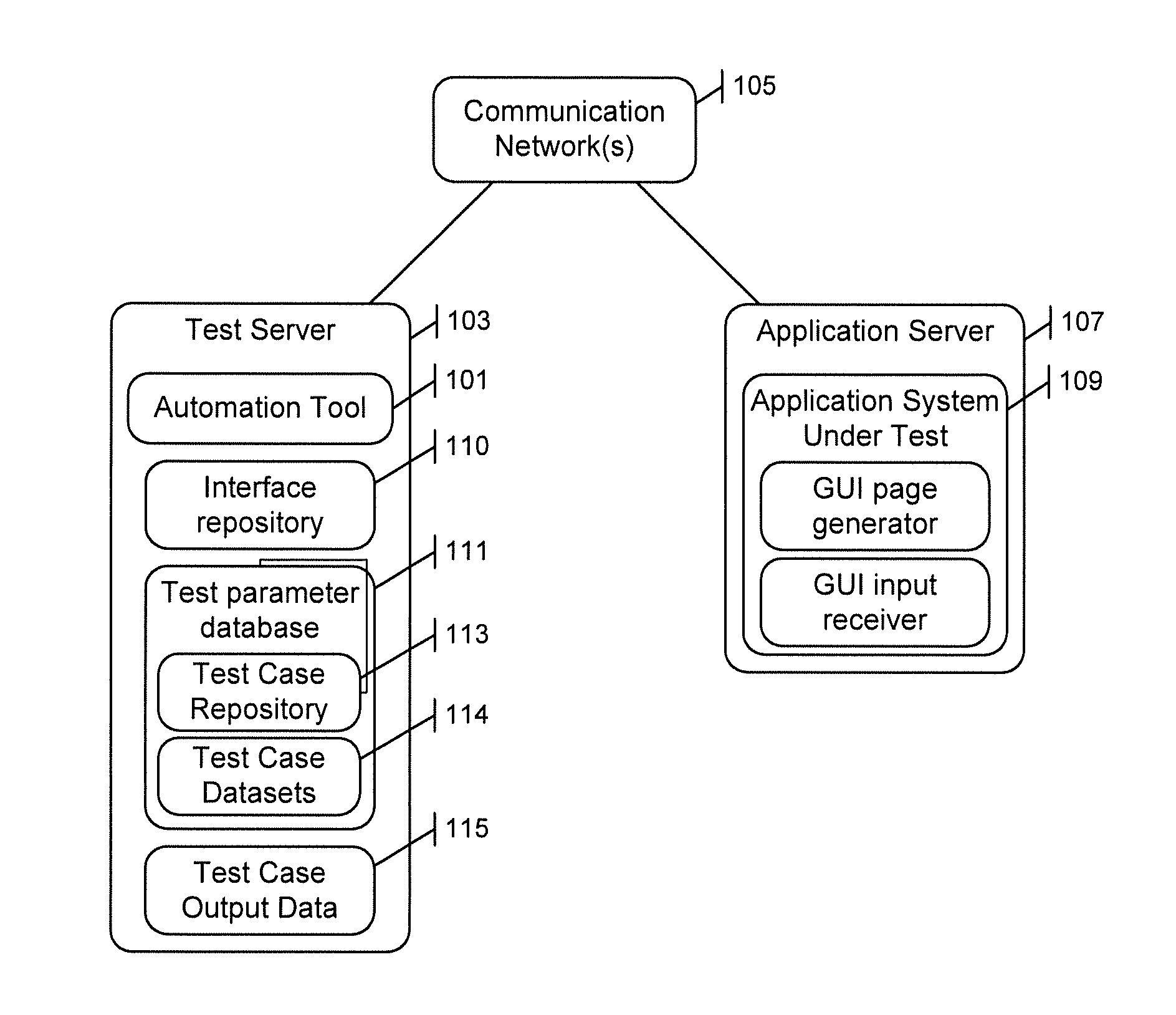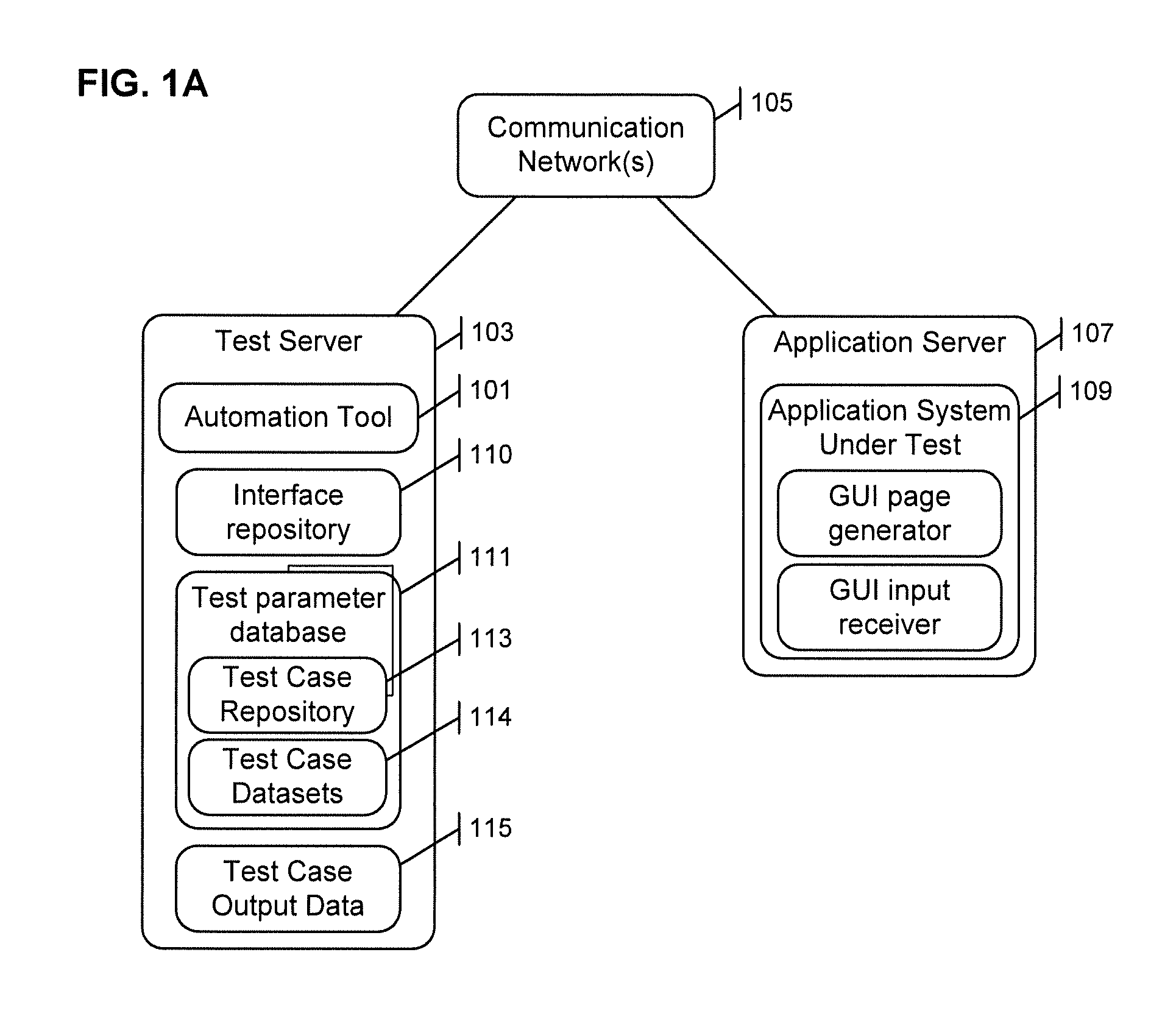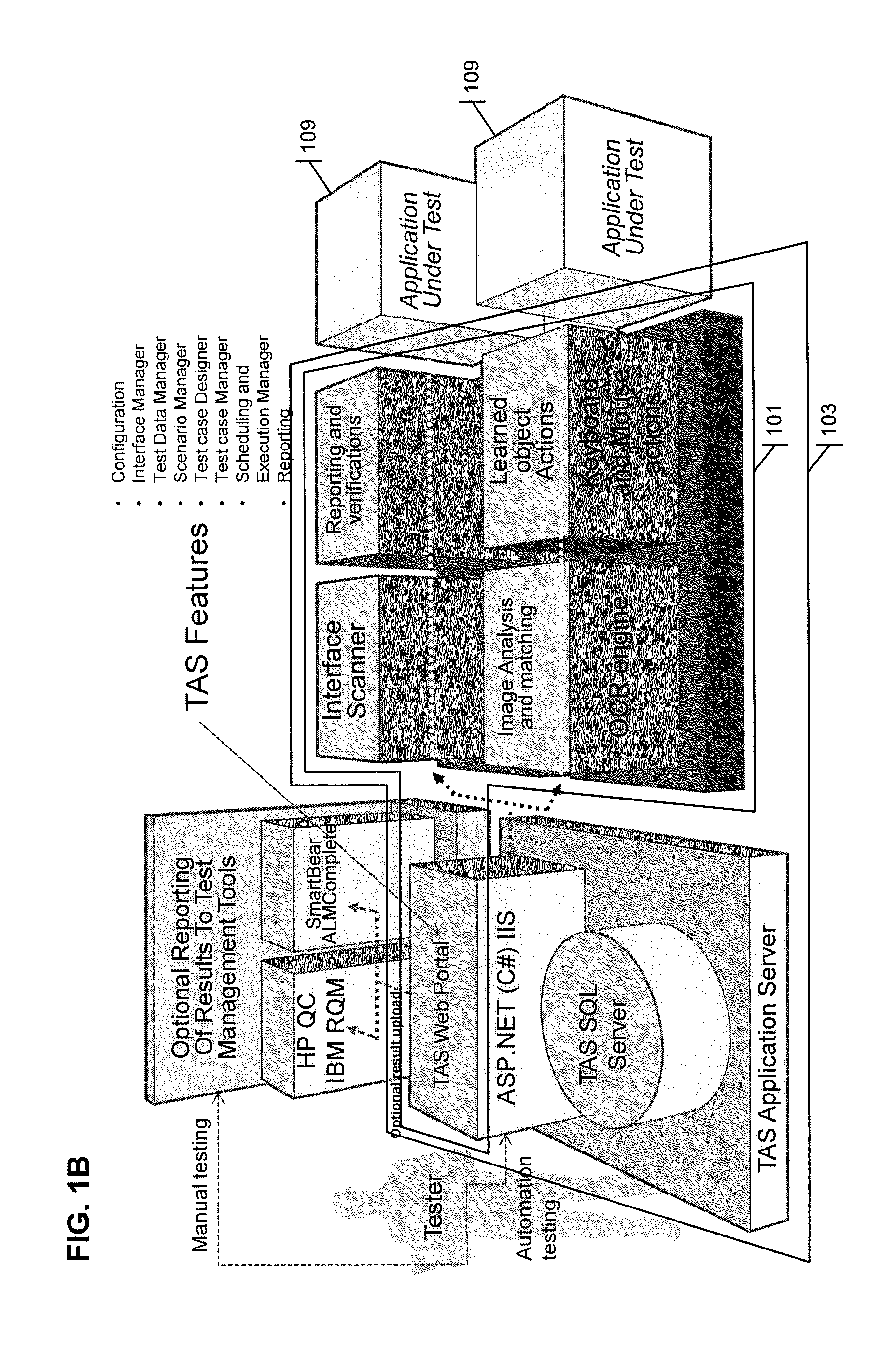Automated testing of an application system
an application system and automatic testing technology, applied in the field of automatic testing of applications systems, can solve the problems of time-consuming and expensive process, maintenance of these tests is also a very costly process of executing test cases, and the setup of these traditional approaches occurs
- Summary
- Abstract
- Description
- Claims
- Application Information
AI Technical Summary
Benefits of technology
Problems solved by technology
Method used
Image
Examples
Embodiment Construction
[0028]In the following detailed description, numerous specific details are set forth by way of examples in order to provide a thorough understanding of the relevant teachings. However, it should be apparent to those skilled in the art that the present teachings may be practiced without such details. In other instances, well known methods, procedures, components, and / or circuitry have been described at a relatively high-level, without detail, in order to avoid unnecessarily obscuring aspects of the present teachings.
[0029]The various methods and systems disclosed herein relate to the automated testing of complex software systems. Systems and methods are provided which use optical character recognition (OCR), pattern matching, image matching, positional, and other visual and shape detection algorithms to learn a graphical user interface (GUI) of a software application with the intention of interacting with it repeatedly as a user would for the purpose of test automation.
[0030]The auto...
PUM
 Login to View More
Login to View More Abstract
Description
Claims
Application Information
 Login to View More
Login to View More - R&D
- Intellectual Property
- Life Sciences
- Materials
- Tech Scout
- Unparalleled Data Quality
- Higher Quality Content
- 60% Fewer Hallucinations
Browse by: Latest US Patents, China's latest patents, Technical Efficacy Thesaurus, Application Domain, Technology Topic, Popular Technical Reports.
© 2025 PatSnap. All rights reserved.Legal|Privacy policy|Modern Slavery Act Transparency Statement|Sitemap|About US| Contact US: help@patsnap.com



